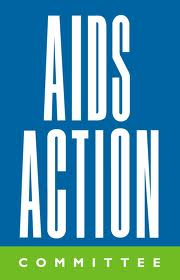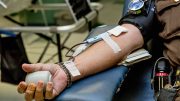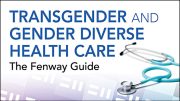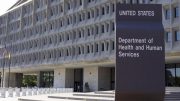More than half (52%) of U.S. men who identify as gay or bisexual consider HIV/AIDS to be the most important health issue for their community, according to a new report from the Kaiser Family Foundation (KFF). The 35-page report summarizes findings from a nationally representative survey of 431 men identifying as gay and bisexual. About half (49%) of the gay and bisexual men surveyed said HIV/AIDS is a “very” or “somewhat” significant issue for them personally, but only about a third (35%) said they were personally concerned about becoming infected, and over half (56%) said they were not personally concerned. When the survey participants were asked to describe the most important issue facing gay and bisexual men today, the greatest number (43%) cited discrimination or lack of acceptance as their highest concern, followed by equal rights (26%), and marriage equality (24%), and HIV/AIDS (20%).
HIV Testing: Contrary to CDC recommendations that gay and bisexual men undergo frequent HIV testing, 70% of the men surveyed said they had not been tested for HIV during the previous year, and three in ten (30%) said they had never been tested for HIV. Compared to gay and bisexual men aged 35 and older, younger men were about twice as likely to say that they had never been tested for HIV (44% versus 21%).
HIV Knowledge and Awareness: Only about a third of the gay and bisexual men surveyed were aware that new HIV infections are rising among gay men. In addition, most gay and bisexual men don’t know what the current treatment recommendations are for persons living with HIV, nor are they aware of recent developments in HIV prevention. In particular, only about a quarter (26%) knew about pre-exposure prophylaxis (PrEP), and just one in ten knew someone, including themselves, who has taken PrEP. Similarly, just 25% knew about treatment as prevention – the fact that consistently taking anti-HIV medications dramatically reduces an HIV-infected person’s risk of transmitting the virus to their sexual partners. [pullquote]When the survey participants were asked to describe the most important issue facing gay and bisexual men today, the greatest number (43%) cited discrimination or lack of acceptance as their highest concern, followed by equal rights (26%), and marriage equality (24%), and HIV/AIDS (20%).[/pullquote]
Generational Differences: The report also compared the experiences and opinions of gay and bisexual men grouped into two age ranges—a younger group 18 to 34 years old and an older group aged 35 and up. “There is a large generational divide in the share saying someone close to them has died from HIV/AIDS,” the report noted. In particular, nearly half (47%) of the older gay and bisexual men said they had lost someone close to them to the disease, compared to just 8% of younger men. The older men were also more likely to say they knew someone currently living with HIV – 54% versus 39% for younger men. The older men also expressed greater comfort (or less discomfort) being in relationships with HIV-infected persons. Specifically, 84% of the older men and 60% of the younger men said they would feel somewhat or very comfortable being in a nonsexual relationship with an HIV-infected person. When asked about having a long-term sexual relationship with an HIV-infected person, 41% of the older men and 22% of the younger men said they would feel somewhat or very comfortable in this situation. [pullquote]Specifically, 84% of the older men and 60% of the younger men said they would feel somewhat or very comfortable being in a nonsexual relationship with an HIV-infected person.[/pullquote]
Young gay and bisexual men with HIV less likely to get regular care than older men
More than three-quarters of U.S. gay, bisexual, and other men who have sex with men (MSM) diagnosed with HIV infection by 2010 were linked to HIV care, according to a new study published in CDC’s Morbidity and Mortality Weekly Report. To assess progress along the HIV continuum of care, CDC researchers analyzed data from the National HIV Surveillance System and the Medical Monitoring Project for MSM with diagnosed HIV infection. They found that, of approximately 10,100 MSM diagnosed with HIV in 19 jurisdictions during 2010, 77.5% were linked to care within three months after diagnosis, 50.9% were retained in care, 49.5% were prescribed antiretroviral therapy (ART), and 42.0% had achieved viral suppression—a key goal in the management of HIV disease.
The researchers found significant disparities in progress along the HIV continuum of care by age and race/ethnicity. In particular, the percentage of MSM linked to care increased with age. Adolescents and young men 13 to 24 years old had the lowest linkage-to-care rates (71%), while men 45 to 54 years old had the highest rates (84%). Among race and ethnic groups, Black/African American MSM had the lowest linkage-to-care rates (72%), followed by Hispanic/Latino MSM (80%) and White MSM (83%).
The percentage of MSM retained in care likewise increased with age. Adolescents and young men 13 to 24 years old had the lowest retention-in-care rates (46%), while men aged 55 and older had the highest rates (53.5%). Among different race and ethnic groups, Black/African American MSM had the lowest retention-in-care rates (46%), followed by White (52%), and Hispanic/Latino MSM (54%). Similar age and race/ethnicity patterns were seen in the proportion of MSM who were prescribed ART or who achieved viral suppression. [pullquote]Among different race and ethnic groups, Black/African American MSM had the lowest retention-in-care rates (46%), followed by White (52%), and Hispanic/Latino MSM (54%).[/pullquote]
“At each step of the continuum of care, younger MSM had lower levels of care compared with older MSM,” the CDC researchers noted. “Black/African American MSM had the lowest levels of care compared with those of all other race/ethnicities. Lack of health insurance, stigma, and discrimination might influence whether MSM access medical care, which has implications for each subsequent step along the continuum of care. Implementing effective interventions for young MSM aged <25 years and Black/African American MSM could improve outcomes along the continuum of care.” The researchers concluded, “Given that MSM account for more than half of new infections and comprise approximately half of persons living with HIV infection, to reduce HIV incidence, improve health outcomes, and reduce HIV-related health disparities in the United States, the prevention and care needs of MSM must be addressed.”
CDC Report Reviews HIV Risk, Prevention, and Testing Behaviors Among U.S. Gay and Bisexual Men
In a recent report, CDC analyzed data on HIV risk, prevention, and testing behaviors among more than 8,000 men who participated in an HIV prevention clinical trial. Selected highlights of the study are summarized below.
Sexual Behavior
- More than three-quarters (77%) of the participants reported having more than one male sex partner during the previous 12 months; 66% reported having a main male sex partner; 77% reported having a casual male sex partner; and 43% reported having both types of partners during the previous 12 months.
- 57% of the participants reported having anal sex without a condom with a male partner during the previous 12 months; by race/ethnicity, Black MSM reported the lowest rates of anal sex without a condom.
- 12% of the MSM surveys reported having anal or vaginal sex with a female partner, and about two-thirds of these men had anal or vaginal sex without a condom with a female partner.
Drug and Alcohol Use
- Nearly half (49%) of the participants reported using non-injection recreational drugs during the previous 12 months. The most commonly used drugs were marijuana (used by 41%), cocaine (17%), poppers (14%), and ecstasy (11%).
- About 5% of the men surveyed reported that had used injection drugs for nonmedical purposes at some point during their lives, and 2% said they had injected drugs during the previous 12 months.
- Most participants (85%) had consumed alcohol in the previous 30 days, and where therefore considered current drinkers. About one-sixth reported heavy drinking. Although men with less than a high school education had the highest rates of heavy drinking, rates of current and binge drinking increased with income.
- Of the more than 4,000 men who reported binge drinking during the previous month, only 13% said they had participated in an alcohol treatment program at some point in their lives.
HIV Testing
- A vast majority of the participants (91%) said they had been tested for HIV infection at least once during their life, and two-thirds (66%) reported being tested during the previous 12 months.
- Among those men who had not been tested during the previous 12 months, the most common reason given for not having an HIV test was the belief that they were at low risk for infection (42%), followed by fear of testing positive (20%), and not having time to get tested (11%). Six percent reported some other reason for not testing, such as lack of transportation, money or health insurance; 20% provided no reason for not testing.
Conclusions
“Despite prevention efforts, a large proportion of MSM have sex without using condoms and do not know their partner’s HIV status before having sex,” the CDC researchers concluded. “Data in this report indicate a need to find innovative strategies for reaching men who are not being reached by current HIV testing and other prevention efforts. Intensified prevention, care, and treatment efforts are becoming more critical to curb HIV infection rates because the survival rates of those infected and the number of men who can transmit the virus are increasing.”
*Eric Brus is the Director of HIV Health Promotion of AIDS Action Committee. This report is produced by the Health Library of the AIDS Action Committee in collaboration with the New England AIDS Education and Training Center Minority AIDS Initiative Project. The full version is available online.








